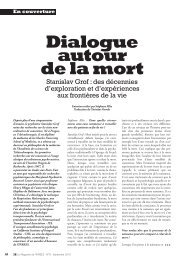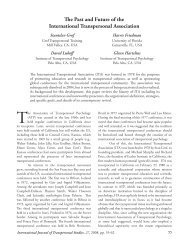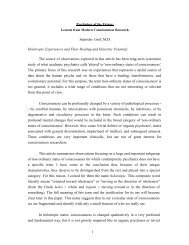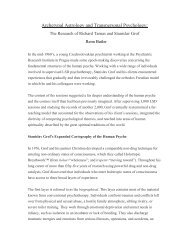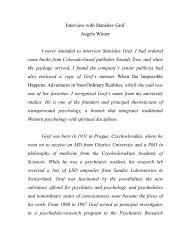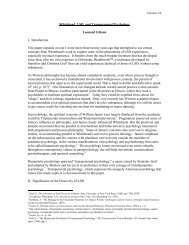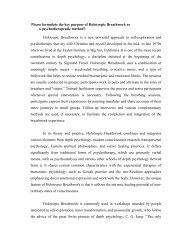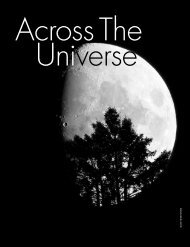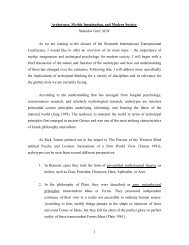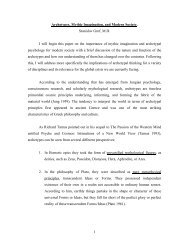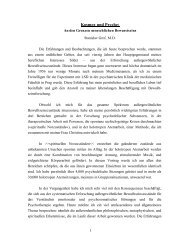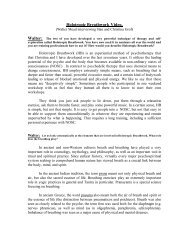1 PSYCHOSIS AND HUMAN SOCIETY: A Historical ... - Stanislav Grof
1 PSYCHOSIS AND HUMAN SOCIETY: A Historical ... - Stanislav Grof
1 PSYCHOSIS AND HUMAN SOCIETY: A Historical ... - Stanislav Grof
You also want an ePaper? Increase the reach of your titles
YUMPU automatically turns print PDFs into web optimized ePapers that Google loves.
they also included an amazing pharmacopeia. Of the many medicinal herbs, two deserve<br />
special attention. A plant with psychedelic properties, whose identity was lost in the<br />
course of time, received much attention in the Rigveda and was considered so powerful<br />
that it was given the name of a god, Soma. The Ayurvedic plant Rauwolfia serpentina<br />
used for treatment of insanity, one of the 500 herbs mentioned in the ancient Charaka<br />
Samhita, became the source of reserpine, an important prototype of modern tranquilizers.<br />
China.<br />
Similarly, in ancient China, the understanding of diseases, physical as well as<br />
mental, was based on the belief in gods and demons as the effective causes. Texts<br />
scratched on oracular bones from the Shang period (1766-1122 B.C.) petitioning gods for<br />
help give numerous examples indicating that refuge from suffering was sought in<br />
magic and exorcism. Clay figurines from the time of the Han dynasty that ruled China<br />
during the centuries around the birth of Christ represent shamans who were believed to<br />
posses power capable of combating mental disease.<br />
This tradition coexisted with naturalistic practices, which represented a unique and<br />
highly original blend of metaphysics and concrete pragmatically valid interventions. The<br />
origins of traditional Chinese medicine can be traced far back into history. The<br />
worldview and the way of thinking that characterizes this system of healing are very<br />
different from and incompatible with the philosophy of Western science. Its approach<br />
was holistic and emphasized disturbances of energy flow in the body underlying physical<br />
and mental problems, rather than pathology of individual organs. For this reason, Chinese<br />
medicine did not distinguish sharply between physical and mental diseases; they were<br />
considered to be different manifestations of the disturbed energetic equilibrium.<br />
The philosophy underlying traditional medicine in China saw the universe as a<br />
complex interplay of five elements or cosmic principles: fire, earth, metal, water, and<br />
wood. These governed various events in the macrocosm, as well as the functioning of the<br />
human body and mind. Elaborate maps were used depicting a system of meridians, or<br />
channels for the flow of chi, or subtle cosmic energy, through the body. In the last<br />
analysis, however, the elements and chi were just specific manifestations of one<br />
transcendent universal principle, the Tao, and its polar components, yin and yang.<br />
3




